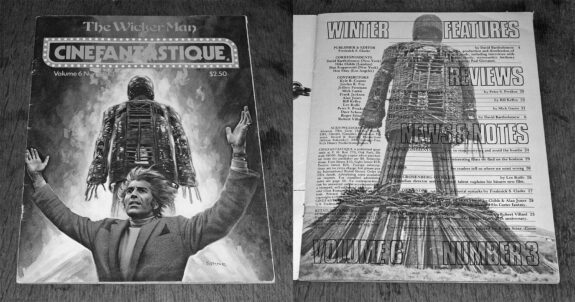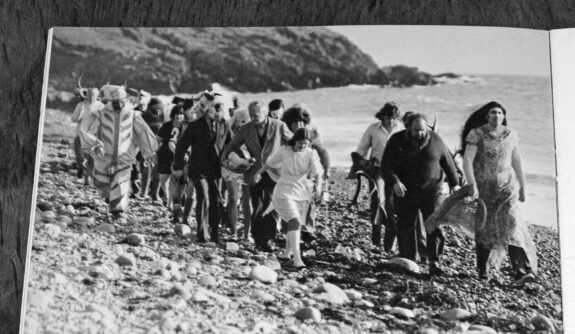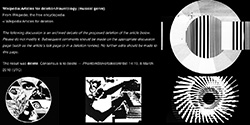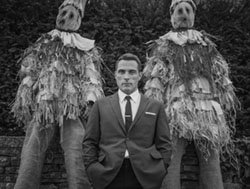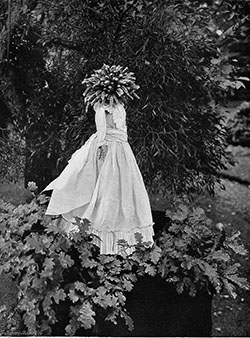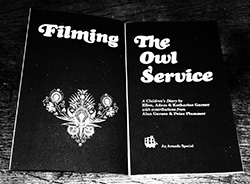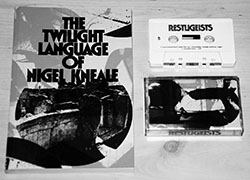Although The Wicker Man’s original release and related reviews were limited and patchwork, over the decades it has gained a higher profile and critical appreciation, and since around 2010 it has come to be one of the main reference points for the loose genre of folk horror and wyrd or otherly pastoral culture. A prominent landmark in this process was the publication in America during October 1977 of a special issue largely devoted to The Wicker Man of the science fiction, fantasy and horror film magazine Cinefantastique, which is quoted from in this chapter. This was published just prior to the cinema re-release of the shorter Theatrical version of the film in America, and approximately a year before the premiere, also in America, of a longer version in September 1978, and the issue’s editorial presciently predicts the growth of interest and critical appreciation of The Wicker Man:
“[It’s] reputation can only grow over the years. It gives me a great deal of pleasure to be among the first to champion the film in the United States, for I think the test of time will show that The Wicker Man is the Citizen Kane of horror films.” (Quoted from “Sense of Wonder”, Frederick S. Clarke, Cinefantastique, Volume 6 Number 3, 1977.)
(This reference to Orson Welles’ 1941 film Citizen Kane is notable as it attempts to place The Wicker Man alongside the very height of critically and publicly acclaimed films, as Citizen Kane is considered by many to be the greatest film ever made and has repeatedly topped lists of the best films.)
In this issue The Wicker Man was the only film pictured or mentioned on the front and back cover and of the 46 inner pages 34 were taken up by a long article written by David Bartholomew on The Wicker Man and colour and black and white photographs from the film and its production. Also the index page’s background was a photograph of the wicker man pyre from the film and the text on the editorial page focused on the film.
The main long article was based in part on interviews with the abovementioned director Robin Hardy, Christopher Lee who played Lord Summer Isle, Anthony Shaffer who wrote the screenplay, the soundtrack composer Paul Giovanni, producer Peter Snell and also Stirling Smith and David Blake who were involved in the film’s American distribution.
The article opens with details of the cast and crew and then is split into sections numbered in a Biblical or Roman numeral style. These included I: The Film – a review of the film and overview of its plots; II: Genesis – details of the project’s initial development, the writing of the script and finding a backer; III: Research and Background – details of the research carried out which created the background and underpinning of the script; IV: The Screenplay – Anthony Shaffer’s background and views on the screenplay and the horror film genre; V: Production – details of the actual filming; VI: Lord Summerisle – Christopher Lee and other’s views on his character; VII: The Music – extensive background details on the soundtrack that draw from an interview with Paul Giovanni; VIII: Aftermath – the film’s troubled release and eventual re-release in America.
This extensive article predates and is a forebear to Allan Brown’s book Inside The Wicker Man (2000, 2010), which focused on the film, and the issue was unusual at the time, and in large part still is, due to the way that it dedicated so much space within a magazine to one particular film, and in that sense it anticipates the contemporary trend for one-off “bookazines” released by magazine publishers which focus on a particular musician, area of film etc.
It is also unusual in the way that it gave a (nominally) horror genre film a level of critical appreciation that this area of film was at the time normally precluded from.
The amount of detail and information contained in the magazine is quite astonishing, particularly considering that it was produced prior to internet access, and so to discover details of the company buyouts and the film’s production etc featured in it, if they were not supplied by the interviewees, is likely to have involved a taxing and rigorous process of investigation.
Physical copies are now fairly rare and can cost anything from approximately £8 to over £100, although links to a PDF scan of the entire magazine and a text only transcript of the article can be found at The Wicker Man (1973) Wiki archival fan site. The magazine and article are well worth seeking out as a unique part of the film’s history and rehabilitation, and also for its both concise and in-depth exploration of the background, production, themes and inspiration of the film.
It reveals the depth of research into ancient folklore, traditions and beliefs which underpin The Wicker Man and its world, alongside the experiences of its creators which may have gone on to influence the film. This includes the following quote from its director Robin Hardy which, although not directly referred to in the article, seems to mirror and possibly informed how the islanders’ treatment of Howie is depicted in The Wicker Man:
“[In the later 1960s] we were filming in the Cornwall area, and one evening we went into Padstow for dinner. Now that is a village where these [tradition folk] festivals are still held, and quite by accident we stumbled right on to it. We saw the hobby-horse chasing the girls [as shown in The Wicker Man], everything. But they had seemed to put up a wall of evasion about it. And it was very unpleasant being a stranger in that town on that day.” (Quoted from “The Wicker Man”, David Bartholomew, Cinefantastique, Volume 6 Number 3, 1977.)
Elsewhere:
- The Wicker Man (1973) Wiki archival fan site including details of the The Wicker Man Cinefantastique special issue
- Allan Brown’s Inside The Wicker Man
Elsewhere at A Year In The Country (well, a few of such things, I expect there are more):
- The Wicker Man – Revisiting a Cultural Behemoth and Casting Aside Convention on Summerisle: Wanderings 12/26
- The Wicker Man Soundtrack and a Summer Isle Mini-Industry
- The Wicker Man – The Future Lost vessels and Artifacts of Modern Folklore
- 138 Layers and Gatherings of The Wicker Man
- Summerisle in (Sort Of) Pop #1 – Pulp’s Wickerman
- Summerisle in (Sort Of) Pop #2 – The Sneaker Pimps’ How Do / Kelli Ali’s Willow’s Song
- Your Face Here; Peering Down into the Landfill – A Now Historical Perspective on the Stories of The Wicker Man
- The Wicker Man / Don’t Look Now Double Bill and Media Disseminations from What Now Seem a Long Long Time Ago
- Constructing The Wicker Man
- The Wicker Man, Edge of Darkness and Village of the Damned – The “Tricky” Cult Remake
- Willow’s Songs
- Revisiting Willow’s Songs
- The Wicker Man Revisited / Refreshed – The Long Arm of the Lore
- The Wicker Man – Summer Isle Books, Bindings, Pounds, Shillings and Pence
- Sing Cuckoo: The Story and Influence of The Wicker Man Soundtrack and Other Partly-Archived Summerisle Discussions
- The Wicker Man – Notes on a Cultural Behemoth
